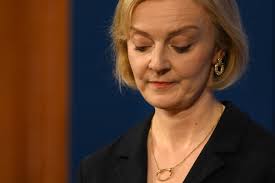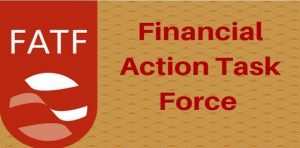Today Current Affairs: 24th October 2022 for UPSC IAS exams, State PSC exams, SSC CGL, State SSC, RRB, Railways, Banking Exam & IBPS, etc
Table of Contents
Fifth Khelo India Youth Games 2022:

The Fifth Khelo India Youth Games 2022 is set to be organized in Madhya Pradesh from January 31 to February 11 next year.
- The Fifth Khelo India Youth Games 2022 is set to be held in 8 cities across Madhya Pradesh
- It would witness the participation of 8,500 athletes.
- This edition will feature a total of 27 sports disciplines, with water sports being included for the first time in the history of the games.
- Sports fields like Canoe Slalom, Kayaking, Canoeing, and Rowing will be featured at this edition.
- Madhya Pradesh will be the fifth state to host the Khelo India Youth Games.
- The previous editions were held in New Delhi, Maharashtra, Assam, and Haryana.
- The 2021 edition was held in Haryana in June 2022 after it was postponed because of the COVID-19 pandemic.
- The upcoming edition will feature a mix of Olympic, non-Olympic and traditional sports like mallakhamba.
- Haryana won the first edition of the Games in 2018.
- The 2019 and 2020 editions were won by Maharashtra.
- The 2021 edition witnessed Haryana beating Maharashtra and winning 137 medals.
Most Popular GI Award:

Union Ministry of Commerce and Industry recently conferred the ‘Most Popular GI’ award to Hyderabadi Haleem and other GI products.
- Hyderabadi Haleem received the ‘Most Popular GI’ award under the food category and agriculture category.
- It received the award by beating dishes like Rasgulla, Bikaneri Bhujiya, and Ratlami Sev.
- The award was presented to the director of Pista House and president of Hyderabad Haleem Makers Association MA Majeed.
- Under the handicraft category, Thanjavur Art Plate from Tamil Nadu won the award.
- Mysore Sandal Soap from Karantaka received the award under the manufacturing category and Uttar Pradesh’s Chuna Balua Patthar won in the natural category.
- The winners of this award were chosen based on the popular vote.
Asia’s Largest Compressed Bio Gas plant:

Union Minister of Petroleum and Natural Gas Hardeep Singh Puri recently inaugurated Asia’s largest Compressed Bio Gas (CBG) plant in Lehragaga, Punjab.
- The compressed Bio Gas (CBG) plant in Lehragaga was constructed at the cost of Rs.230 crore over 20 acres of land.
- The project was commissioned with a foreign direct investment (FDI) of Verbio AG – one of the leading bio-energy companies in Germany.
- The CBG plant is currently capable of processing 6 tonnes of paddy straw each day.
- This capacity will later be expanded to 300 tonnes of paddy straw per day to produce 33 TPD of compressed biogas using eight digesters of 10,000 cubic meters.
- It will address the issue of stubble burning in the state.
- The CBG plant will consume 100,000 tonnes of paddy straw, which will be procured from 6 to 8 satellite locations within a 10 km radius of the plant.
- It will produce 600-650 Tons of FOM (fermented organic manure) each day. The manure will be used for organic farming.
- The new CBG plant is a step towards achieving the goals of the Sustainable Alternative Towards Affordable Transportation (SATAT) scheme.
- SATAT scheme : The Indian Government launched the SATAT scheme in 2018 to set up the CBG production plants across the country by inviting expressions of interest through potential investors. The CBG will be used for the automotive sector.
UK Prime Minister Liz Truss Resigns:

UK Prime Minister Liz Truss resigned just 45 days after taking office.
- With the recent resignation, Liz Truss becomes the shortest-serving British Prime Minister.
- This record was earlier held by George Canning, who served for 119 days in 1827 until he died of tuberculosis.
- Truss is the fourth Tory PM to resign before the end of the term. Others are David Cameron, Theresa May, and Boris Johnson.
- One of the major reasons for Truss’s resignation is the infamous mini-budget, which sought to reduce income taxes for the highest earners and cut down some other taxes while increasing government spending.
- Amid the historically high inflation, the mini-budget caused market turmoil because of increased borrowing and the possibility of the government not being able to repay the incurred debts.
- Thus, the investors started selling all possible UK assets and the pound sterling fell to historic lows against the US dollar, worsening the imported inflation further.
- Similarly, investors were unwilling to lend money to the UK government and started selling government bonds (gilts), leading to the price of gilts decreasing and their yields (the interest rate charged by the market for lending money) spiking.
- The falling gilt value adversely affected the pension funds.
- The sharp increase in market interest rates means that those with home loans have to either refinance or risk losing their homes and the new loans were costlier.
- This occurred amidst the cost of living crisis in the UK and the high energy prices.
- These issues caused many of her party members to call for her resignation.
Financial Action Task Force : Pakistan Is Off The ‘Grey List’:

Pakistan is off the ‘grey list’ of the Financial Action Task Force (FATF) after four years.
- The FATF is a global watchdog that was founded to tackle money laundering initially but its role became prominent post the 9/11 terror attacks.
- Following the attacks, the FATF expanded its operations and included terror financing under its purview.
- There are currently 39 members of the FATF; 37 jurisdictions and 2 regional organisations (the Gulf Cooperation Council and the European Commission).
- The FATF maintains two lists –a blacklist and a grey list.
- Countries on its blacklist are those that the watchdog deems non-cooperative in the global effort to curb money laundering and terror-financing.
- The grey list are officially referred to as ‘Jurisdictions Under Increased Monitoring’.
- 23 countries remain under watch.
- Among these countries are the Philippines, Syria, Yemen, the United Arab Emirates, Uganda, Morocco, Jamaica, Cambodia, Burkina Faso, and South Sudan, and the tax havens of Barbados, Cayman Islands, and Panama.
- It constitutes those nations that present significant risks of money laundering and terror-financing but which have committed to working closely with the FATF in the development and implementation of action plans that address their deficiencies.
- If the country is not actively tackling money laundering or terror funding, it is then blacklisted.
- So far, only two countries have been blacklisted, they are Iran and North Korea.
National Curriculum Framework:

The Union Education ministry launched the National Curriculum Framework for foundational stage education of children in the three to eight years age group.
- The framework focuses on the ‘panchakosha’ concept – the ancient Indian emphasis on the body-mind connection.
- The NCF says its five parts are physical development (sharirik vikas), development of life energy (pranik vikas), emotional and mental development (manasik vikas), intellectual development (bauddhik vikas) and spiritual development (chaitsik vikas).
- It is an important step taken to implement the New Education Policy-2020.
National Curriculum Framework has four sections:
- the National Curriculum Framework for School Education
- the National Curriculum Framework for Early Childhood Care and Education
- the National Curriculum Framework for Teacher Education
- National Curriculum Framework for Adult Education
NEP, 2020:
- The National Education Policy 2020 (NEP 2020) is transforming education in India.
- It has set the education system on a path to delivering the highest quality education for all, with equity and inclusion.
- Amongst the most transformative aspects of NEP 2020 is the new 5+3+3+4 curricular structure which integrates Early Childhood Care and Education for all children of ages 3 to 8.
Great Indian Bustards Sighted In Pakistan:

The recent sighting of three Great Indian Bustards (GIBs) deep in Pakistan’s Cholistan desert has given rise to speculation that the endangered birds might have flown across the international border from India’s Desert National Park (DNP).
- The Great Indian Bustard, found mainly in the Indian subcontinent, is the flagship grassland species of India.
- It is one of the largest flying birds in the world, and India’s heaviest flying bird.
- The male bird weighs upto 12-15 kg and female bird up to 5-8 kg.
Physical description:
- Black crown on the forehead contrasting with the pale neck and head.
- The body is brownish and the wings are marked with black, brown and grey.
Distribution:
- Its population of about 150 in Rajasthan accounts for 95% of its total world population.
- They are mainly in Jaisalmer district of Rajasthan, including the Desert National Park which is the natural habitat of the species.
- Grasslands of Kutch in Gujarat which is home to second-largest bustard population in India.
- Arid regions of Maharashtra (Solapur), Karnataka (Bellary and Haveri) and Andhra Pradesh (Kurnool)
- It is the State bird of Rajasthan.
Conservation status:
- Listed in Schedule I of the Indian Wildlife (Protection)Act, 1972,
- Listed in Appendix I of CITES,
- Listed as Critically Endangered on the IUCN Red List.
James Webb Telescope : Pillars Of Creation

Highly detailed landscape- the iconic “Pillars of Creation” has been caught by NASA’s powerful James Webb Telescope.
Pillars of Creation:
- It is a vista of three looming towers made of interstellar dust and gas.
- These iconic Pillars of Creation is located in the centre of the Eagle Nebula (it is a constellation of stars), which is also known as Messier 16.
- The images show vast, towering columns of dense clouds of gas and dust where young stars are forming in a region some 6,500 light-years from Earth.
- At the ends of several pillars are bright red, lava-like spots. These are ejections from stars that are still forming, only a few hundred thousand years old.
- The pillars were made famous by the Hubble Space Telescope, which first captured them in 1995 and then again in 2014.
- The new image will help researchers revamp their models of star formation by identifying far more precise counts of newly formed stars, along with the quantities of gas and dust in the region.
James Webb Space Telescope:
- The telescope is the result of an international collaboration between NASA, the European Space Agency (ESA) and the Canadian Space Agency which was launched in December 2021.
- It is currently at a point in space known as the Sun-Earth L2 Lagrange point, approximately 1.5 million km beyond Earth’s orbit around the Sun.
- Lagrange Point 2 is one of the five points in the orbital plane of the Earth-Sun system.
- Named after Italian-French mathematician Josephy-Louis Lagrange, the points are in any revolving two-body system like Earth and Sun, marking where the gravitational forces of the two large bodies cancel each other out.
- Objects placed at these positions are relatively stable and require minimal external energy or fuel to keep themselves there, and so many instruments are positioned here.
- It’s the largest, most powerful infrared space telescope ever built.
- It’s the successor to Hubble Telescope.
- It can see backwards in time to just after the Big Bang by looking for galaxies that are so far away that the light has taken many billions of years to get from those galaxies to our telescopes




